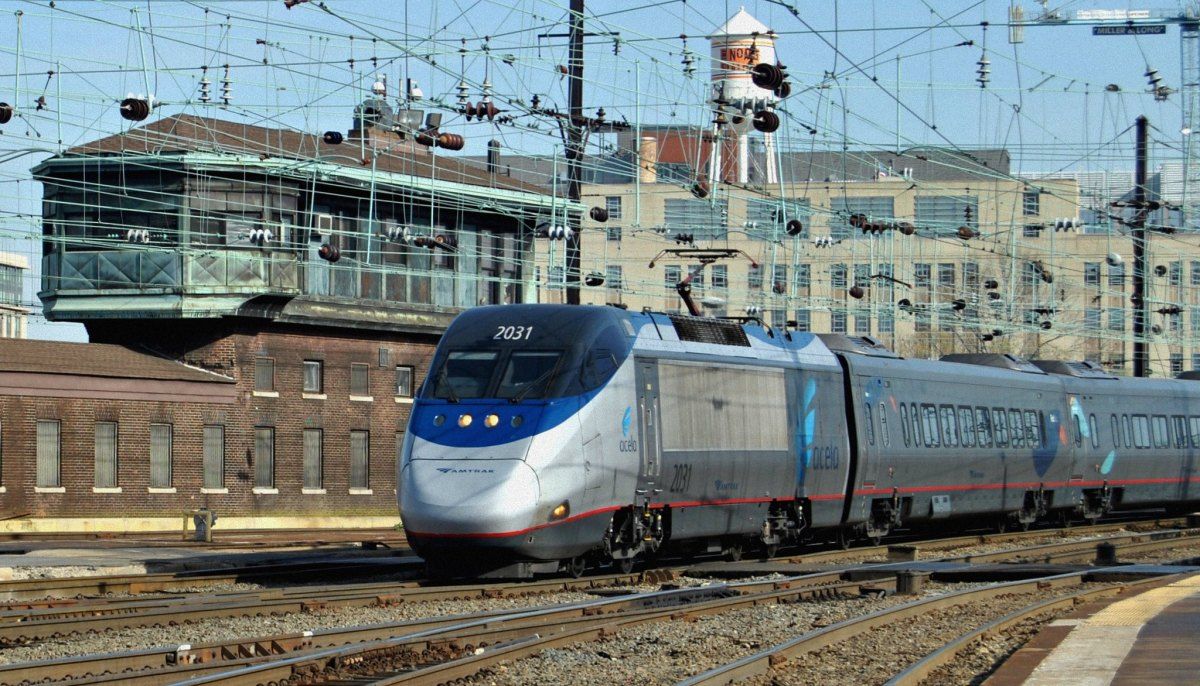Amtrak expects 2020 to be first profitable year in the company’s history

A few minutes every morning is all you need.
Stay up to date on the world's Headlines and Human Stories. It's fun, it's factual, it's fluff-free.
For the first time in its 50-year history, Amtrak, the largest passenger railroad service in North America, is set to make a profit. That is according to company projections for 2020, as reported by the company’s board chairman.
Despite these optimistic projections, Amtrak has started the year with a pair of bad public relations stories.
Amtrak’s fiscal growth
Amtrak Board Chairman Anthony Coscia stated on Nov. 8 that in 2020, Amtrak “will have positive earnings for the first time in the company’s history.”
As the Washington Post reported, this would follow 2019’s successful fiscal year in which the company nearly broke even. Carrying a record 32.5 million passengers, Amtrak generated an operating revenue of $3.3 billion, an increase of 3.6 percent over 2018. Even with that growth, though, Amtrak still had an operating loss of $29.8 million for the fiscal year of 2019.
Amtrak’s decades of instability
As Business Insider reported, Amtrak has always struggled with “financial instability.” A 1970 law, passed by President Richard Nixon, paved the way for the creation of National Railroad Passenger Corp., now known as Amtrak. That law, which provided government funds to support the rail system, was designed to help save the dying rail industry.
Despite this help, though, the rail system has continued to struggle against other forms of transportation. In 2000, hoping to increase train ridership, Amtrak introduced the Acela Express, a high-speed train that connects the major hubs in the northeastern United States, including Boston, New York City, and Washington D.C.
Even with those efforts, though, Amtrak still never recorded a profitable year. This is despite the fact that the company receives nearly $2 billion in subsidies from the US government.
For 2020, US President Donald Trump proposed cutting 24 percent of Amtrak’s funding from the federal budget. That followed proposed cuts in both of Trump’s 2018 and 2019 budgets (the cuts never ended up in the final budget passed by Congress).
In addition to the financial struggles, the organization has seen tragedy. Notably, there was a two-month period from December 2017 to February 2018 in which four separate Amtrak train accidents resulted in deaths.
[article_ad]
Getting on the right track
In June 2017, former Delta CEO Richard Anderson took over as Amtrak’s chief executive officer and president with a plan to finally make Amtrak profitable, as well as to increase safety on the railroad.
Instead of cutting costs, Anderson invested $2.5 billion in improving trains and infrastructure. His focus was specifically on making the high-speed trains better, even as he acknowledged that the US lags behind Europe in terms of infrastructure and investment in high-speed rail.
Some of his money-saving plans have been unpopular, including ending dining-car service and limiting long-haul routes. Still, Anderson has made improving customer service a major focus of his tenure as CEO, a fact that he credits for Amtrak’s recent financial growth.
“We listened, we invested, we improved, and our customers are noticing a difference,” Anderson said.
The bad press continues
While improved profits are always a welcome story for shareholders, Amtrak has also been getting less favorable headlines in 2020. This past week included two separate stories involving bad customer experiences that led to public backlash.
NPR reported the first story on Jan. 17. The news agency learned that two passengers who were in wheelchairs were told they would have to pay $25,000 for tickets to ride from Chicago to Bloomington-Normal, Il, a city roughly 130 miles southwest of Chicago. One ticket normally sells for $16.
Amtrak had explained they didn’t have room for the passengers and would need to take a train car out of service and have seats removed from that car. The work required to make those accommodations is what purportedly led to the $25,000 bill.
Backlash to the story included a series of tweets from Senator Tammy Duckworth that called the $25,000 charge “outrageous.” The senator, who is a double amputee from wounds she received while fighting in Iraq, said she would meet with Anderson to discuss Amtrak’s policies regarding accommodating people with disabilities.
NPR reported on Monday that Amtrak had found a solution and wouldn’t be charging the passengers $25,000.
On Friday, Sherrilyn Ifill, the head of the NAACP’s Legal Defense and Educational Fund, tweeted that she was being asked to give up her seat on an Amtrak train, despite there being no assigned seats. A subsequent tweet thread explained there was no reason for her being asked to move.
Ifill expressed annoyance that Amtrak did not immediately reach out to discuss the matter with her, even though their social media team had replied to other commenters in her tweet thread. By Saturday night, Amtrak had contacted Ifill, who said Amtrak officials apologized to her in private.
[article_ad]




Comments ()